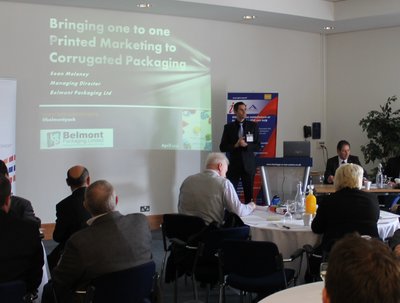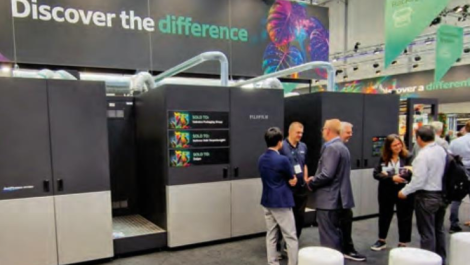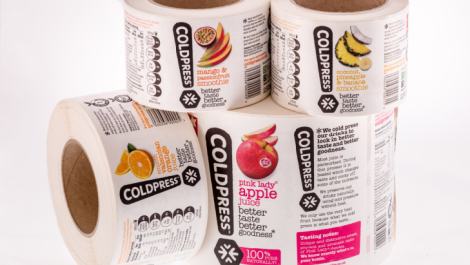Under the heading ‘The Spark of Genius’, the members of the Independent Print Industries Association (IPIA) met for a conference ‘to discover the power of print and marketing innovations in a digital age.’ Neel Madsen reports from the event.
Taking place at the Heritage Motor Centre in Gaydon, Warwickshire, on April 18, the IPIA’s conference brought together its members for a conference that included presentations from a wide variety of speakers. Andrew Pearce, chef executive, said, ‘We want to provide the spark that will drive your business forward. Our speakers are people who are truly revolutionising the world of print and direct marketing.’
Boxing clever
From a packaging print perspective, Sean Moloney, managing director of Belmont Packaging, spoke about his company’s on demand service of digitally printed corrugated products can benefit brands owners.
Using digital printing technology is new to the corrugated sector, which has traditionally been dominated by medium to long runs with longer lead times. With this new service comes all the benefits digital is already offering in other parts of the packaging market, such as fast turnaround, variable data and designs, low costs and short runs. Digital printing is the great leveller and the advantages to customers, be they global brands or the small start up company down the road, are significant.
By in effect closing down the normal supply chain and offering complete flexibility on pack, Belmont is able to turn orders around within 48 hours giving customers the ability to manage multiple SKUs easily or try out new packaging designs on shelf cheaply, but in the high quality demanded by brand owners.
Mr Moloney said, ‘Those customers looking for innovative ideas are increasingly turning to digital print. Our service offers a cheaper risk-free option to buyers due to reduced origination costs and ultra short print runs, while still producing high quality shelf ready packaging.’
Bridging the divide
Another fascinating presentation came from Kamal Rassool of Total Immersion, the augmented reality (AR) specialists, who showed the delegates how AR can be used to enhance brands and engage customers through bridging the gap between the physical world, ie print, and the virtual digital world.
For packaging, AR can be used to drive customers to the brand’s website via markers, printed on for instance the cereal box which gives kids access to games or competitions online. With face-tracking technology, the user’s own face can appear in the game with options to change the look virtually. This is also used by opticians and eyewear brands, including Ray-Ban whose Virtual Mirror allows the customer to try on sun glasses from its range via AR and a webcam.
Mr Rassool said, ‘Initially used as a branding tool for events and experimental marketing, AR has found its way into relationship marketing and direct marketing, and is now becoming a legitimate selling tool to convert customers. The enabling technology (smart mobile devices) is now in the hands of more consumers […] and as far as print is concerned, there are many opportunities to be found in augmented packaging, marketing and advertising.’






